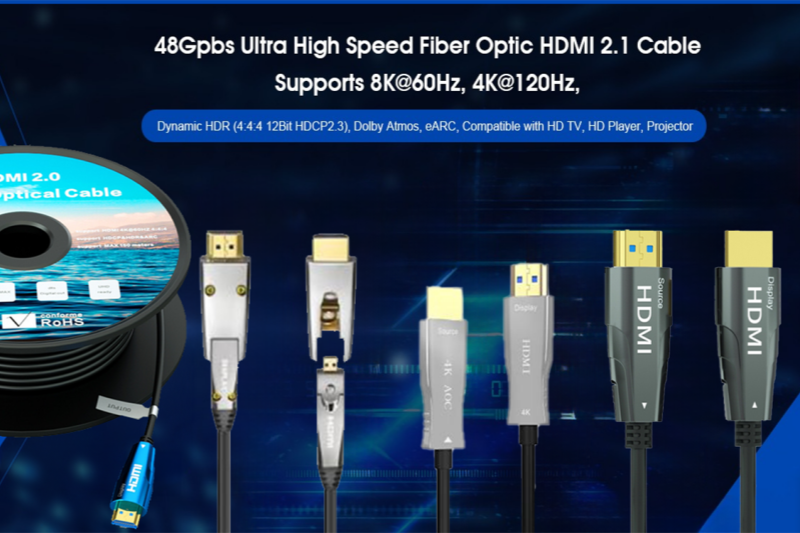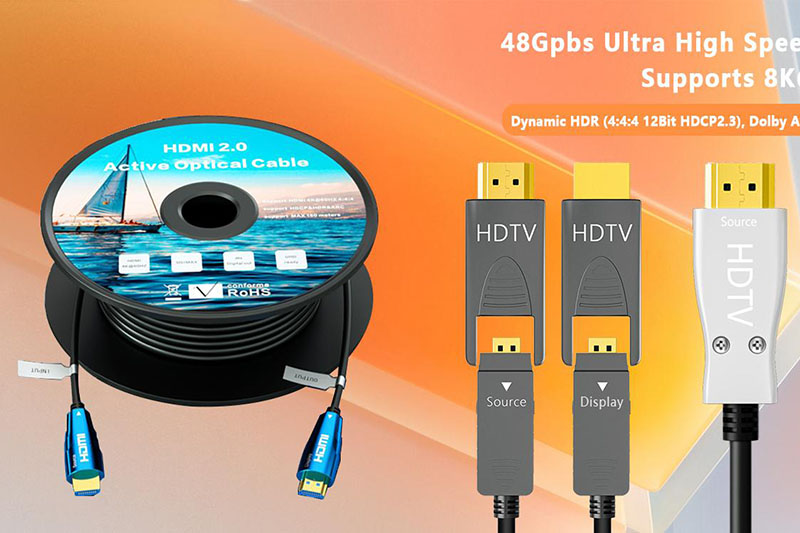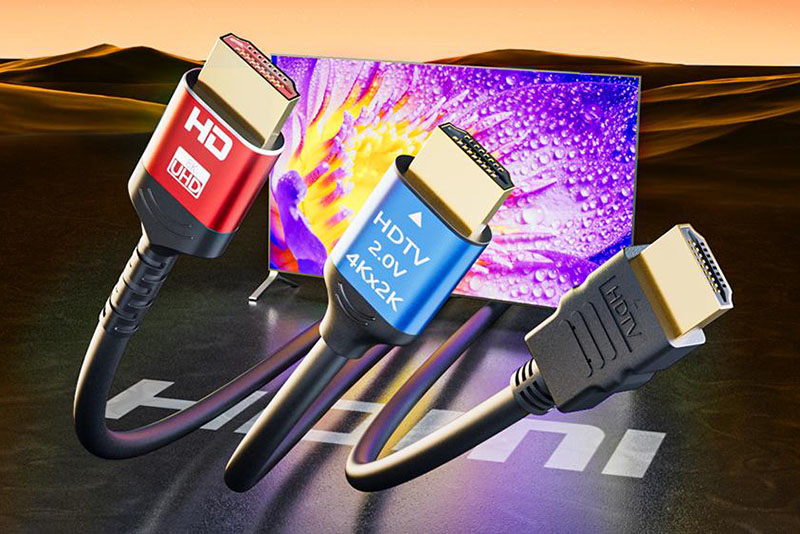HDMI interface and specifications
The concepts involved are:
TMDS: (Time Minimized Differential Signal) Minimized differential signal transmission, is a differential signal transmission method, HDMI signal transmission channel adopted this way.
HDCP: (High-bandwidthDigital Content Protection) High-bandwidth digital content protection.
DDC: Display Data Channel
CEC: Consumer Electronics Control
EDID: Extended Display Identification Data
E-EDIO: Enhanced Extended Display Identification Data
Their representation in the transmission process of HDMI is roughly as follows:
HDMI version development
HDMI 1.0
HDMI 1.0 version was introduced in December 2002, its biggest feature is the integration of audio stream digital interface, and then the PC interface is popular DVI interface compared, it is more advanced and more convenient.
HDMI version 1.0 supports video streaming from DVD to Blu-ray format, and has CEC (consumer electronics control) function, that is, in the application, you can form a common link between all connected devices, the device group has more convenient control.
HDMI 1.1
Interview for HDMI version 1.1 in May 2004. Added support for DVD audio.
HDMI 1.2
HDMI 1.2 version was launched in August 2005, to a large extent to solve the resolution of HDMI 1.1 support is low, with computer equipment compatibility problems. The 1.2 version of the pixel clock runs at 165 MHz and the data volume reaches 4.95 Gbps, so 1080 P. It can be considered that version 1.2 solves the 1080P problem of the TV and the point-to-point problem of the computer.
HDMI 1.3
In June 2006, the HDMI 1.3 update brought the biggest change to the single-link bandwidth frequency to 340 MHz. This will enable these LCD TVs to obtain 10.2Gbps data transmission, and the 1.3 version of the line is composed of four pairs of transmission channels, of which one pair of channels is the clock channel, and the other three pairs are TMDS channels (minimizing the transmission of differential signals), their transmission speeds are 3.4GBPs. Then 3 pairs is 3 * 3.4 = 10.2 GPBS is able to greatly expand the 24-bit color depth supported by HDMI1.1 and 1.2 versions to 30, 36 and 48 bits (RGB or YCbCr). HDMI 1.3 supports 1080 P; Some of the less demanding 3D is also supported (theoretically not supported, but actually some can).
HDMI 1.4
HDMI 1.4 version can already support 4K, but is subject to 10.2Gbps bandwidth, the maximum can only reach 3840 × 2160 resolution and 30FPS frame rate.
HDMI 2.0
The bandwidth of HDMI 2.0 is expanded to 18Gbps, supports ready-to-use and hot plugging, supports 3840 × 2160 resolution and 50FPS, 60FPS frame rates. At the same time in the audio support up to 32 channels, and a maximum sampling rate of 1536 kHz. HDMI 2.0 does not define new digital lines and connectors, interfaces, so it can maintain perfect backward compatibility with HDMI 1.x, and the existing two types of digital lines can be used directly. HDMI 2.0 will not replace HDMI 1.x, but based on the latter enhancement, any device to support HDMI 2.0 must first ensure the basic support of HDMI 1.x.
HDMI 2.1
The standard provides bandwidth of up to 48Gbps, and more specifically, the new HDMI 2.1 standard now supports 7680 × 4320 @ 60Hz and 4K @ 120hz. The 4 K includes 4096 × 2160 pixels and 3840 × 2160 pixels of true 4 K, while in the HDMI 2.0 specification, only 4 K @ 60Hz is supported.
HDMI Interface Type:
Type A HDMI A Type is the most widely used HDMI cable with 19 pins, 13.9 mm wide and 4.45 mm thick. General flat screen TV or video equipment, are provided with this size of the interface, Type A has 19 pins, width of 13.9 mm, thickness of 4.45 mm, and now 99% of the audio and video equipment used in daily life are equipped with this size of the interface. For example: Blu-ray player, millet box, notebook computer, LCD TV, projector and so on.
Type B HDMI B Type is relatively rare in life. The HDMI B connector is 29 pins and 21 mm wide. HDMI B Type data transfer capability is nearly twice as fast as HDMI A Type and is equivalent to DVI Dual-Link. Since most audio and video equipment operates below 165MHz, and the operating frequency of HDMI B Type is above 270MHz, it is completely too "tough" in home applications, and is now only used in some professional occasions, such as WQXGA 2560 × 1600 resolution.
Type C HDMI C Type, often called Mini HDMI, is mainly designed for small devices. HDMI C Type also uses 19 pin, its size of 10.42 × 2.4 mm is nearly 1 / 3 smaller than Type A, the application range is very small, mainly used in portable devices, such as digital cameras, portable players and other equipment.
Type D HDMI D Type is commonly known as Micro HDMI. HDMI D Type is the latest interface type, further reduced in size. The double-row pin design, also 19 pins, is only 6.4 mm wide and 2.8 mm thick, much like the Mini USB interface. Mainly used in small mobile devices, more suitable for portable and vehicle equipment. For example: mobile phones, tablets, etc.
Type E (Type E) HDMI E Type is mainly used for audio and video transmission of in-vehicle entertainment systems. Due to the instability of the vehicle interior environment, HDMI E Type is designed to have characteristics such as seismic resistance, moisture resistance, high strength resistance, and large temperature difference tolerance. In the physical structure, the mechanical locking design can ensure the contact reliability.








